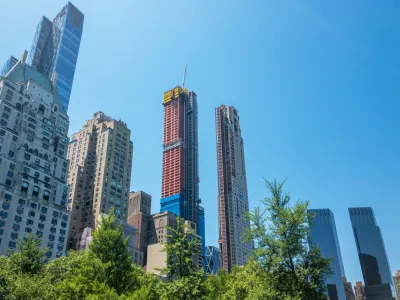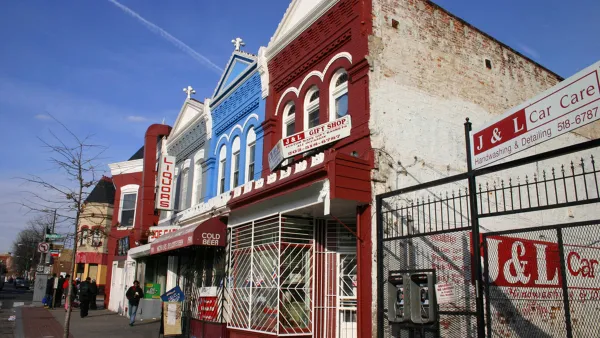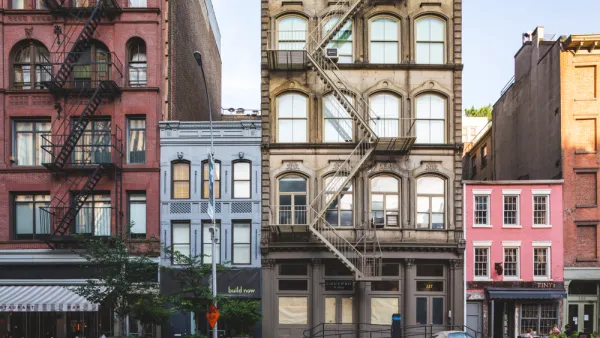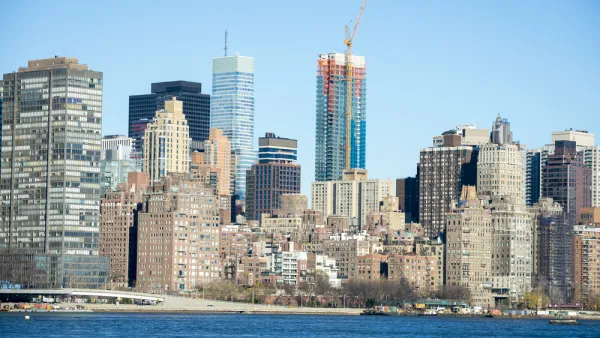New York City's groundbreaking Mandatory Inclusionary Housing Program will turn five years old in March. While some call for the program to be eliminated, others defend it.

New York City's Mandatory Inclusionary Housing (MIH) program recently inspired a back-and-forth debate in the pages of City Limits.
Sandy Hornick and Lynn Ellsworth both write articles on the subject of New York City's Mandatory Inclusionary Housing (MIH) program, adopted by the New York City Council in 2016 and championed by Mayor Bill de Blasio as a component of the Housing New York Plan.
Ellsworth writes first, describing the MIH program as a failure for falling short of its lofty targets of affordable housing creation. Among a list of failures, Ellsworth includes: "The MIH policy doesn’t work. As of December 2019, only 2,000 'affordable' units of the promised 80,000 have actually been built under the policy. Surely that is a sign of failure." Instead of building affordable housing, argues Ellsworth, MIH "[floods] upzoned neighborhoods with luxury housing, mostly in the form of towers, creating a kind of gentrification on steroids that displaces existing residents and the small businesses that served them."
Ellsworth proposes six policy alternatives to MIH, including incentives for accessory dwelling units, community housing trusts, building on city-owned land, and single room occupancy buildings, among other prescriptions.
Hornick follows with a rejoinder, immediately taking exception to the fundamental issue of how many affordable housing units have been delivered by the MIH program.
Ms. Ellsworth asserts that the city promised that the MIH program would deliver 80,000 affordable apartments but only delivered 2,000. No such promise was ever made. The promise of 80,000 new affordable dwellings was made in 2014 but relates to the total new construction anticipated over 10 years in the Mayor’s Housing New York Plan from all of the city’s programs. At the end of fiscal year 2020—seven years into the program—the city had financed just over 50,000 new units. That’s a little off the pace needed to get to 80,000 newly-built homes in 10 years but comfortably within reach of exceeding 70,000. Falling short of the goal by 10 percent or so may not be a point to brag about but adding over 7,000 new affordable apartments a year is a pretty remarkable accomplishment.
According to Hornick, it's not market-rate housing development that causes gentrification and rising housing costs, as suggested by Ellsworth, but its lack. "In New York City—for at least the past four decades—the shortfall in housing production has resulted in a market pushing up the price of existing housing to the substantial detriment of the less affluent."
As noted by Hornick, the MIH program is only applicable in neighborhoods that have been rezoned since the implementation MIH, which until recently hadn't included any of the more affluent neighborhoods in New York City. The ongoing process of rezoning NoHo and SoHo in Manhattan, along with Gowanus in Brooklyn, will change that dynamic.
FULL STORY: Opinion: In Defense of Mandatory Inclusionary Housing

Analysis: Cybertruck Fatality Rate Far Exceeds That of Ford Pinto
The Tesla Cybertruck was recalled seven times last year.

National Parks Layoffs Will Cause Communities to Lose Billions
Thousands of essential park workers were laid off this week, just before the busy spring break season.

Retro-silient?: America’s First “Eco-burb,” The Woodlands Turns 50
A master-planned community north of Houston offers lessons on green infrastructure and resilient design, but falls short of its founder’s lofty affordability and walkability goals.

Test News Post 1
This is a summary

Analysis: Cybertruck Fatality Rate Far Exceeds That of Ford Pinto
The Tesla Cybertruck was recalled seven times last year.

Test News Headline 46
Test for the image on the front page.
Urban Design for Planners 1: Software Tools
This six-course series explores essential urban design concepts using open source software and equips planners with the tools they need to participate fully in the urban design process.
Planning for Universal Design
Learn the tools for implementing Universal Design in planning regulations.
EMC Planning Group, Inc.
Planetizen
Planetizen
Mpact (formerly Rail~Volution)
Great Falls Development Authority, Inc.
HUDs Office of Policy Development and Research
NYU Wagner Graduate School of Public Service




























